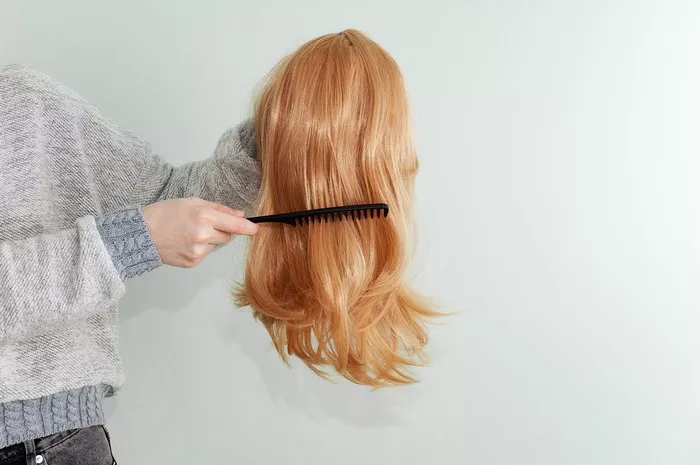Synthetic hair has become a popular choice for many due to its affordability and versatility. However, unlike natural hair, synthetic hair is more prone to damage from heat, friction, and improper care. If your synthetic hairpiece or extensions have seen better days, don’t worry – there are ways to bring them back to life. This comprehensive guide will provide you with detailed steps and tips on how to fix synthetic hair when damaged, ensuring your hairpiece looks as good as new.
Understanding Synthetic Hair
Before diving into the repair process, it’s essential to understand what synthetic hair is made of. Synthetic hair is usually composed of fine plastic fibers designed to mimic the appearance and feel of natural hair. These fibers can be made from various materials, including polyester, acrylic, and PVC. Due to their plastic nature, synthetic fibers are sensitive to heat and can melt or become irreversibly damaged if exposed to high temperatures.
Common Issues with Synthetic Hair
Synthetic hair can suffer from several types of damage. Here are the most common issues:
1. Tangles and Matting: Over time, synthetic hair can become tangled and matted, especially if it rubs against clothing or is not stored properly.
2. Frizzing and Fraying: Friction and wear can cause the fibers to frizz and the ends to fray, making the hair look rough and unnatural.
3. Heat Damage: Accidentally exposing synthetic hair to heat, such as from a curling iron or hairdryer, can cause the fibers to melt or become distorted.
4. Loss of Shine: Synthetic hair can lose its luster due to exposure to dust, pollution, and improper cleaning methods.
Step-by-Step Guide to Fixing Synthetic Hair
1. Detangling and De-Matting
Materials Needed:
- Wide-tooth comb
- Fabric softener
- Spray bottle
- Towel
Procedure:
1. Prepare a Detangling Solution: Fill a spray bottle with a mixture of half water and half fabric softener.
2. Spray the Hair: Lightly spray the synthetic hair with the solution, ensuring it is damp but not soaking wet.
3. Gently Comb Through: Starting from the ends, use a wide-tooth comb to gently detangle the hair, working your way up to the roots. Be patient and avoid pulling or yanking to prevent further damage.
4. Rinse and Dry: Rinse the hair with cool water to remove any residue from the fabric softener. Pat the hair dry with a towel and let it air dry completely.
2. Restoring Shine
Materials Needed:
- Synthetic hair shampoo and conditioner
- Cold water
- Soft towel
Procedure:
1. Wash the Hair: Use a shampoo specifically designed for synthetic hair. Avoid regular shampoos as they can be too harsh. Gently massage the shampoo into the hair and rinse with cold water.
2. Condition: Apply a conditioner made for synthetic hair, focusing on the ends. Leave it on for a few minutes before rinsing thoroughly with cold water.
3. Dry Properly: Pat the hair dry with a soft towel and allow it to air dry. Avoid using a hairdryer as the heat can damage the fibers.
See Also: How Long to Wet Hair After Perm: Things You Need To Know
3. Smoothing Frizz and Frayed Ends
Materials Needed:
- Fabric softener
- Hot water
- Basin
- Towel
Procedure:
1. Prepare a Smoothing Solution: Mix a small amount of fabric softener with hot water in a basin.
2. Soak the Hair: Submerge the synthetic hair in the solution and let it soak for about 5-10 minutes.
3. Rinse and Dry: Rinse the hair with cool water to remove the fabric softener. Pat it dry with a towel and allow it to air dry. This process can help to smooth out frizz and seal the ends.
4. Fixing Heat Damage
Heat damage is one of the trickiest issues to fix in synthetic hair, but it is possible with careful handling.
Materials Needed:
- Steamer
- Wide-tooth comb
- Towel
Procedure:
1. Steam the Hair: Use a steamer to gently steam the synthetic hair. Hold the steamer about 6-12 inches away from the hair and move it slowly to avoid direct heat exposure.
2. Comb Through: While the hair is still warm from the steam, gently comb through it with a wide-tooth comb to reshape and smooth the fibers.
3. Let it Cool: Allow the hair to cool completely before styling it further. This helps to set the new shape and reduce any remaining frizz.
Preventive Care Tips
Preventing damage is always easier than fixing it. Here are some tips to keep your synthetic hair in top condition:
1. Avoid Heat: Keep synthetic hair away from heat sources like curling irons, straighteners, and hairdryers. Opt for heat-free styling methods.
2. Proper Storage: Store your synthetic hair in a cool, dry place. Use a wig stand or a mannequin head to maintain its shape.
3. Regular Maintenance: Brush the hair regularly with a wide-tooth comb to prevent tangles. Wash and condition it as needed with products designed for synthetic hair.
4. Protect from Friction: Avoid excessive friction from clothing and accessories. Wear a silk or satin scarf at night to protect the hair while you sleep.
Conclusion
Fixing synthetic hair when damaged can be a delicate process, but with the right techniques and materials, you can restore its appearance and prolong its lifespan. By understanding the nature of synthetic hair and following the detailed steps provided, you can tackle common issues like tangles, frizz, and heat damage effectively. Additionally, adopting preventive care practices will help maintain the beauty and integrity of your synthetic hair, ensuring it looks great for longer.


